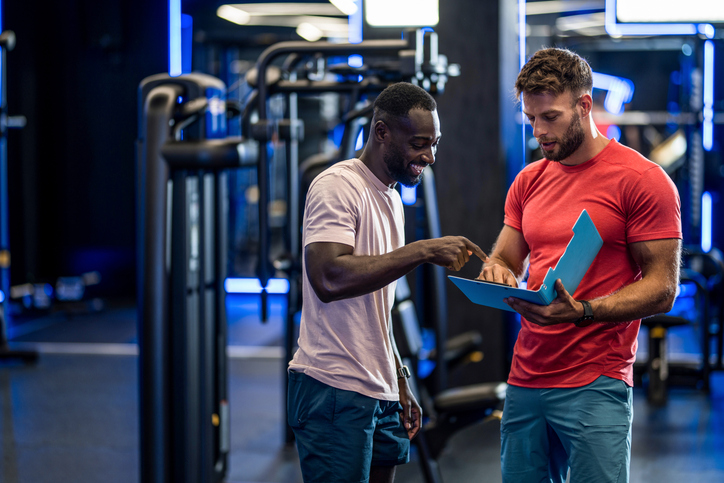Why the Next Generation of Member Loyalty Starts with Emotion
For years, loyalty in fitness and wellness was measured by key fobs and check-ins. If someone kept showing up, they were considered loyal. But as facility operators face growing pressure to retain members, drive engagement, and stand out in a saturated market, that old definition is starting to crumble.
In this post, Dr. Mark Kovacs—renowned human performance strategist and longtime advisor to elite athletes, resorts, and health-first brands—argues that the future of loyalty isn’t built on access or incentives. It’s built on experiences that resonate. Emotional stickiness, not transactional stickiness, is what keeps members coming back.
From recovery lounges to personalized tech to community-powered workouts, Dr. Kovacs outlines the emerging pillars of what he calls the New Loyalty Loop—a model that redefines member retention by designing for how people feel, not just how they perform.
If you’re leading a wellness-focused facility in 2025, this is the mindset shift you can’t afford to ignore.
The New Loyalty Loop: Experiences, Not Just Access, Are Driving Repeat Engagement
By Dr. Mark Kovacs, PhD, FACSM
Human Performance Strategist, Wellness & Longevity Expert
In today’s wellness and fitness landscape, access is no longer enough. Facility design, equipment offerings, and class schedules used to be the anchors of membership value. But in 2025, repeat engagement is increasingly driven by experiences, not only infrastructure. Loyalty is no longer transactional; it’s emotional.

This is the emergence of the New Loyalty Loop. A model where experience-driven ecosystems outperform traditional membership models in sustaining long-term member retention, satisfaction, and advocacy.
As someone who’s spent two decades focused on human performance and working with health clubs, luxury resorts, professional sports teams, private country clubs and longevity clinics, I’ve seen firsthand that member loyalty comes from a combination of the equipment and services you offer, but also how people feel when they walk in, interact, move, recover, and connect - with both people and purpose.
Let’s explore what’s driving this new loyalty loop, and how your facility can evolve from offering access to delivering emotionally resonant experiences that keep people coming back.
From Transactional to Transformational
Historically, wellness centers were judged on physical access: square footage, 24/7 entry, class availability, and how quickly members could check in and out. Those days are over.
Today’s members (particularly Millennials and Gen Z) expect more. They seek:
- Community over convenience
- Connection over capacity
- Experiences over effort
They’re not just looking to sweat; they’re looking to belong. And they’re willing to stay loyal if your facility becomes a consistent source of health, wellness and emotional reward, not just physical output.
This shift mirrors larger societal changes. Coming out of a global pandemic, people have reevaluated their priorities. Wellness is now deeply tied to mental health, social connection, purpose, and longevity.
The brands that recognize this and reengineer their offerings accordingly are winning.
Key Trends Driving the New Loyalty Loop
Here are the pillars that define this new experience-centric loyalty model:
1. Social Fitness as a Loyalty Engine
Social connection is one of the most underutilized levers in the fitness industry. Group fitness used to be an option—now it’s a strategy.
Events like community workouts, walk-and-talks, or challenge weeks turn your gym into a hub of shared identity. Studies show that people are more likely to stay consistent with healthy behaviors when those behaviors are socially reinforced. Friendships formed through fitness often lead to deeper emotional ties to your facility itself.

Tip: Create “anchor experiences” each month that members look forward to. Think less about volume and more about meaningful, repeatable, shared events.
2. Tech Integration as Personalization, Not Gadgetry
Today’s members don’t care if you have the flashiest screens or the newest app unless it adds personal relevance. The power of technology lies in enhancing self-awareness and connection, not just delivering data. Also, the consumer is looking for accuracy, scientific validity, and it is important to have technology and data that is accurate.
Whether it’s wearables syncing with strength equipment, recovery zone touchpoints, or AI-driven coaching platforms, the question should always be: How does this technology make the member feel more seen, understood, or supported?
Tip: Integrate tech that closes the feedback loop—like body composition scans (that are accurate) that inform training programs, or HRV data that guides recovery protocols. Personalized insights build deeper loyalty than generic features.
3. Recovery and Regeneration as Premium Experiences
More and more, facilities are realizing that how members recover is just as important as how they train. Recovery lounges, red light therapy, compression boots, or even float tanks are becoming the differentiators that drive recurring engagement.
Recovery is no longer just a perk; it is an anchor. It tells your members: you care about their longevity, not just their performance.
Tip: Curate a recovery experience that feels indulgent, not obligatory. Make it easy, relaxing, and part of the habit loop. It is not an add-on, it is part of every visit experience.
4. Lifestyle Programming That Extends Beyond the Facility
To build long-term loyalty, you must extend your brand beyond the walls of your gym or center. That means content, coaching, and community must follow members wherever they go.
On-demand education, virtual check-ins, habit tracking, and even travel-based fitness meetups are all tools to create ambient belonging. If your brand exists in their daily lives, it doesn’t have to compete for attention every time they decide whether or not to come in.
Tip: Consider bundling in lifestyle coaching, social events, and travel groups as part of premium memberships. These added dimensions create stickier emotional engagement.
Why Experience-Based Loyalty Works
Traditional loyalty models rely on incentives: discounts, streaks, referral bonuses. But behavioral science shows us that intrinsic motivation like enjoyment, belonging, and emotional reward is more sustainable than extrinsic motivation.
When a member sees your facility not as a gym, but as:
- A space to sweat
- A space to recharge
- A community they identify with
- A brand that cares about their whole self
…they’re not just a member. They’re a loyalist. And loyalists don’t churn—they champion. They become the best salespeople your facility will ever have.
Final Thought: Design for Emotion, Not Just Output
As a performance scientist, I’ve spent much of my life studying how people move and how to get the most people to help them achieve greatness. However, the more leaders I work with, the more apparent that the real key to long-term performance, wellness, and retention is how people feel.
In 2025 and beyond, the facilities that dominate will not be those with the best floorplans or the most advanced machines. They’ll be the ones that engineer emotionally intelligent experiences - experiences that engage, restore, and connect.
That is the future of loyalty. And it starts with designing for more than access. It starts with designing for meaning.
About the Author
Dr. Mark Kovacs, PhD, FACSM is a human performance executive, wellness and longevity expert, sport scientist and former professional athlete who has worked with world-class performers across Olympic sport, professional leagues, and corporate wellness. He has led health and performance operations at organizations including Canyon Ranch, Gatorade, PepsiCo, Cleveland Cavaliers (NBA) and the United States Tennis Association. He consults globally on facility design, longevity, wellness, optimizing performance, recovery, for athletes, executives, and health-focused organizations.



